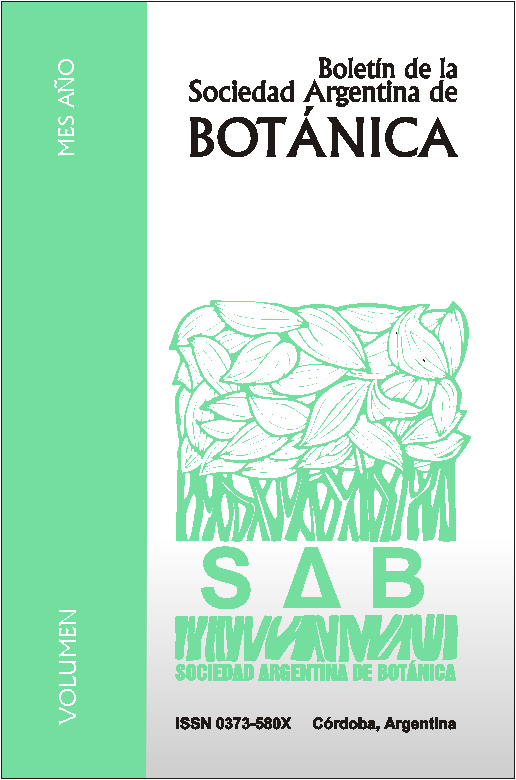Antagonism and modes of action of Chaetomium globosum species group, potential biocontrol agent of barley foliar diseases.
DOI:
https://doi.org/10.31055/1851.2372.v51.n4.16334Keywords:
Bipolaris sorokiniana, Chaetomium globosum, Drechslera teres, antibiosis, endophyte, mycoparasitism.Abstract
“Net blotch” (Drechslera teres) and “Bipolaris spot blotch” (Bipolaris sorokiniana) are foliar diseases of barley. Biological control is currently considered as an efficient alternative to chemical management of these plant diseases. The aim of the present study was to identify 2 isolates of Chaetomium (C2 and C5), endophytics on barley seedlings and to study the in vitro interactions with D. teres and B. sorokiniana, isolated from seeds of the same host. Cultural and morphological
characterization of all microorganisms was done. In addition, molecular characterization of Chaetomiumspp. was conducted and dual culture tests were carried out to find, by microscopic observations, the effects of the antagonist on the morphology of the pathogens. The results confirm the identity of the pathogens and the isolates of Chaetomium spp. as Chaetomium globosum species group. Inhibition of B. sorokiniana and D. teres by C2 and C5 accounted for 30% and 31.2 %, and 40% and 36% respectively, compared with the control. The mechanisms of action against B. sorokiniana and D. teres were antibiosis and competition and mycoparasitism, respectively. Microscopic observation revealed deformed conidia in B. sorokiniana and plasmolisis, coiling and orange pigmentation in D. teres.
Downloads
Published
Issue
Section
License
Provides immediate and free OPEN ACCESS to its content under the principle of making research freely available to the public, which fosters a greater exchange of global knowledge, allowing authors to maintain their copyright without restrictions.
Material published in Bol. Soc. Argent. Bot. is distributed under a Creative Commons Attribution-NonCommercial-ShareAlike 4.0 International license.





